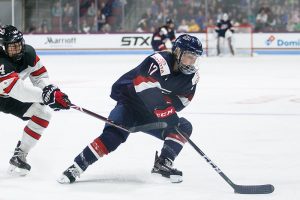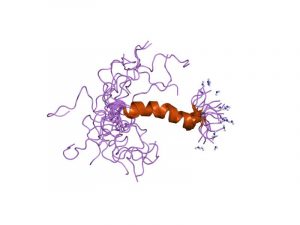By Eryn Gerber and Morgan Gizzi
If you have ever experienced a sprain, it is incredibly likely that your doctor has prescribed the R.I.C.E. method for rehabilitation. The acronym R.I.C.E., which stands for Rest, Ice, Compression, and Elevation, is a commonly used tool for most soft tissue injuries, including joint sprains and muscle tears. However, despite the popularity of the acronym, it may be phased out as a rehabilitation guideline. Several studies, including one by Michel van den Bekerom, MD et. al., emphasize that there is insufficient evidence to prove R.I.C.E. is an effective technique for soft tissue injuries. In fact, it may encourage behavior that is counterproductive to a full recovery by limiting rehabilitation options to rest and immobility of the injured area. A previous post from a student last year examines this concept in the context of ankle sprains, but it is important to evaluate the implications of the ‘rest’ portion of R.I.C.E. for multiple types of injuries.
It has recently been brought into question whether rest and immobilization are the best treatment for soft tissue injuries. In a study by T.L. Mehlhoff et. al., 52 adults with an elbow dislocation who were treated with varying amounts of immobility at the elbow were monitored for their range of motion, pain, and residual neurovascular compromise over a time period of almost three years. It was found that the longer the duration of immobilization, the more difficult it was to re-mobilize the patient’s joint due to a flexion contracture of over 30° for 15% of patients. This is because a lack of physical stress on the joint can cause cartilage atrophy and disalignment of ligament fibers, thus limiting the functional rehabilitation of the joint. Despite this study being limited in its number of subjects as well as the fact that it does not incorporate other types of injuries in addition to elbow injuries, it does show that immobilization correlates with a patient’s delayed return to activity and hinders their ability to fully recover.
The immobilization of injured joints also can have the effect of increasing pain. A higher pain index was recorded for patients in the T.L. Mehlhoff et. al study that reported 35% of the patients had pain when extending their elbow and 45% of patients had increased residual pain during their follow up at three years after the initial injury. This was measured simply by whether or not there was an increase in pain since the injury occurred, and a more quantitative scale would give a more substantial case, but this is a clear indication that immobilization led to patients feeling discomfort and pain over time.
An article published to the New England Journal of Medicine detailing a study done by Bayer et. al. found similar results to the T.L. Mehlhoff et. al study, but in a population of 50 amateur athletes with over half of this population having a thigh injury and just under half having a calf injury. These 50 patients were randomized and some were instructed to begin remobilization two days after the injury, while the remaining athletes remobilized nine days after the injury. The athletes were followed up with for a year and it was found that those who began to introduce movement into their rehabilitation routines soon after injury (the two days rather than nine days after injury) had a shorter recovery time until they had a full return to sports. Between elbow injuries and large muscle injuries in the leg, it is clear that exposing the site to some degree of motion and loading is beneficial to returning that area to full mobility.
The pain that patients feel post-injury, like the patients in the T.L. Mehlhoff et. al study, may be due to sensory neuropeptides becoming too sensitive in response to the healing process being interrupted by immobilization. In a study performed by Bring et. al. in a rat model of an Achilles tendon rupture, it was found that rats that had mobility after injury had an extracellular matrix (ECM) mRNA regeneration rate at 17 days after injury that was 14 times higher than rats who were immobilized. This ECM regeneration is what helps the tendon to recover by assisting more vasculature, collagen, and fibroblasts to the area to begin healing. Without this proper healing the neuropeptides can become over-sensitive to stimulation, and it is this sensitivity that results in perceived pain. This data, although founded in a rat model and not humans, links immobilization of an injury with a decrease in the mechanical steps that allow for recovery on a very crucial level. This is yet another piece of evidence as to how important it can be to keep an injured area within some capacity of controlled loading.
With studies being done on how movement can be a key part of healing, medical professionals have been reevaluating the use of R.I.C.E. as the go-to injury rehabilitation method. P.O.L.I.C.E.D. is a new acronym that gives a more comprehensive approach to dealing with most soft tissue injuries. This acronym, which stands for Protection, Optimal Loading, Ice, Core strength, Education, and Diet suggests that a wide range of components play a role in the healing process. The inclusion of ‘Optimal Loading’ is a more accurate way to help heal an injury than just rest alone, as is supported by the many studies previously mentioned above.
The R.I.C.E. method may simply be outdated for what we know about the importance of mobilization for soft tissue injuries. In order to make a full and timely recovery the injured area must be mechanically loaded in order to promote healing on a molecular level that translates to a full recovery and full range of motion with limited pain. Further studies should be done to determine how soon after an injury it is beneficial for patients to begin loading and moving their injured sites, as well as studies that show how much loading is optimal long term. However, there is evidence from multiple sources and perspectives (from micro- to macroscopic scale) that disproves the efficiency of a strictly rest-based plan for soft tissue injuries. Thus, the R.I.C.E. method should be phased out and replaced with a more effective treatment plan that involves early re-introduction to physical stress, such as P.O.L.I.C.E.D.. But this begs the question… how early is too early to re-mobilize?
*With any medical decision, you should always consult your personal physician when developing the right recovery plan for you.*
Discussion Questions:
Do you think P.O.L.I.C.E.D. is a more accurate acronym for injury rehab? Is there a study you would conduct to determine which method is more effective? What might be a better acronym than R.I.C.E. and P.O.L.I.C.E.D. that would be simple enough for patients to incorporate but would still be effective?
Recommended Further Reading – Works Cited
- Michel P.J. van den Bekerom, et. al.(2012) What Is the Evidence for Rest, Ice, Compression, and Elevation Therapy in the Treatment of Ankle Sprains in Adults?. Journal of Athletic Training: Jul/Aug 2012, Vol. 47, No. 4, pp. 435-443.
- T.L. Mehlhoff, et. al.(1988). Simple dislocation of the elbow in the adult. Results after closed treatment. The Journal of Bone and Joint Surgery, American Volume: Feb 1988, Vol. 70, No. 2, pp. 244-249.
- W.H. Akeson, et. al. (1987) Effects of Immobilization on Joints. Clinical Orthopaedics and Related Research. Jun 1987, Vol. 219, pp. 28-37.
- Daniel K. I. Bring, et. al. (2009). Joint immobilization reduces the expression of sensory neuropeptide receptors and impairs healing after tendon rupture in a rat model. Journal of Orthopaedic Research. Feb 2002, Vol. 27, Issue 2, pp. 274-280.
- Figure 1. Achilles Tendon Rupture in a human Attribution:By Hellerhoff (Own work) [CC BY-SA 3.0 (https://creativecommons.org/licenses/by-sa/3.0)], via Wikimedia Commons
- C M Bleakley, et. al., (2011). PRICE needs updating, should we call the POLICE?. British Journal of Sports Medicine. Sept 2011, Vol. 46, Issue 4.
- Figure 2. Cartoon representation of the molecular structure of protein registered with 1k8v code. Jawahar Swaminathan and MSD staff at the European Bioinformatics Institute – http://www.ebi.ac.uk/pdbe-srv/view/images/entry/1k8v600.png, displayed on http://www.ebi.ac.uk/pdbe-srv/view/entry/1k8v/summary



